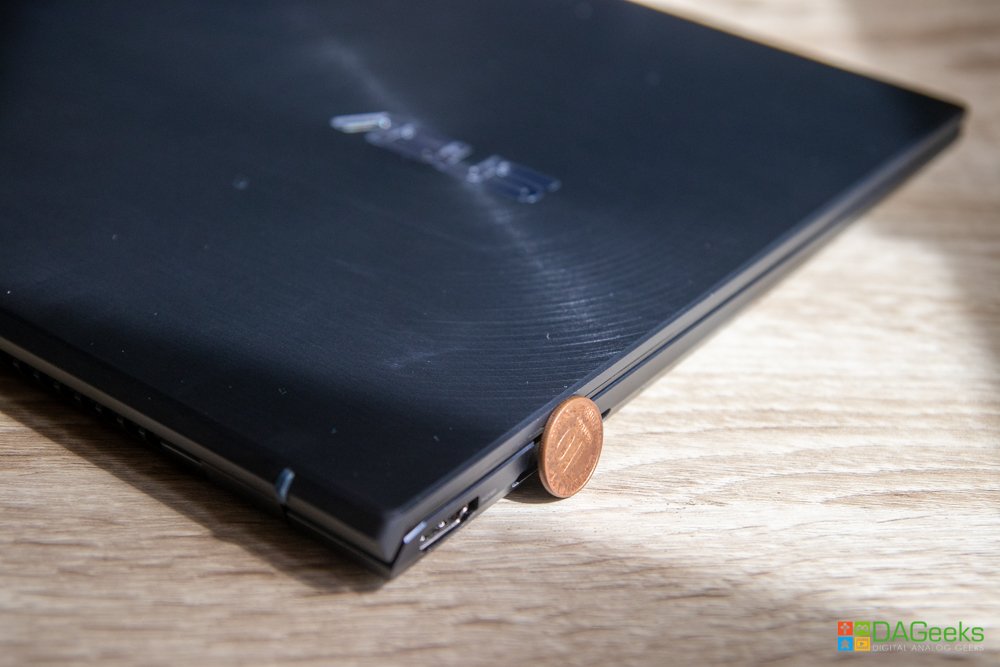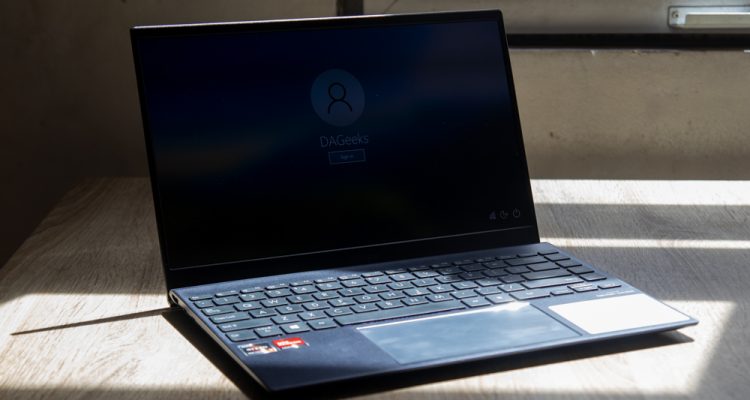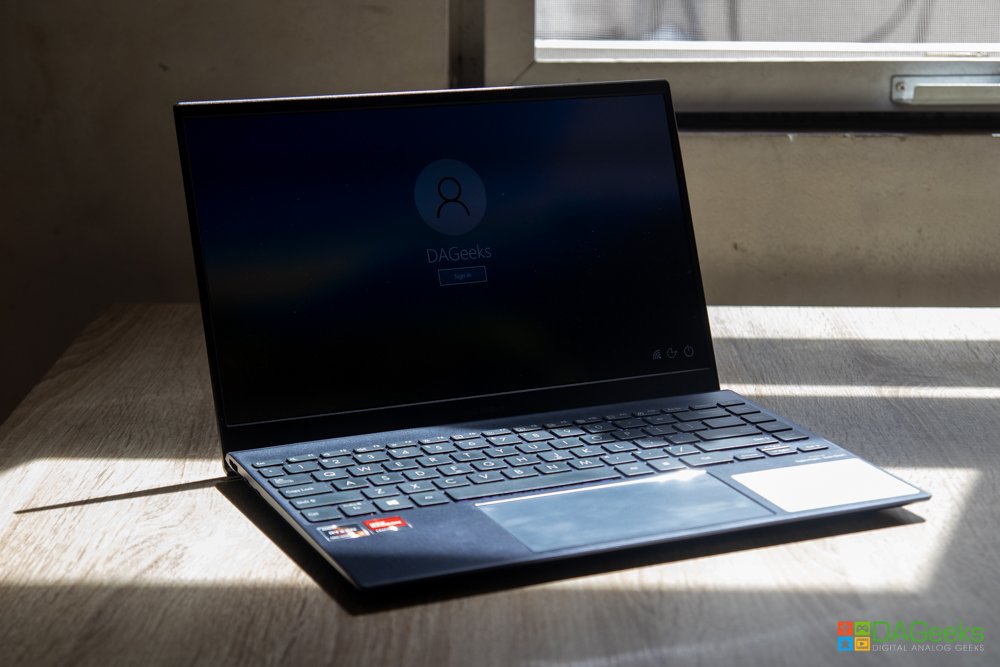Ultrabooks had never been cheap. Its portability gives it a premium. Not only are they built lightweight, but they’re built to perform more than your average laptops. ASUS took that as a challenge and gave consumers not only an affordable machine in its segment, but gave it a crowning glory never heard in its price point, an OLED screen.
Design
The latest iteration of the ASUS ZenBook 13 OLED gave it a smaller, lighter footprint. It’s only 13.9mm at its thickest point and you can literally slide it inside a brown envelope. The ZenBook 13 OLED is only 1.14kg, making it one of the lightest OLED laptops available right now.

There’s little flex on the lid and keyboard thanks to its all-metal design. My only gripe is the tension on the lid. It’s easy enough to open up, but when you have it at a certain angle, the lid sometimes flop all the way to the back when you lift the laptop.

The keyboard is what ASUS calls an edge-to-edge design, having a complete set of F keys and editing keys on the right side. I find the editing keys useful, but the alpha keys are a bit cramped and small, and I have medium-sized hands.

The power key is also at an awkward space as you can accidentally press it if you’re keen on using the Delete or Backspace keys. The keys on the ZenBook 13 OLED has a very good travel at 1.4mm and feels good to type on. The keys are backlit with white LED and the characters are big and legible.

Despite its size, the trackpad on the ZenBook 13 OLED is huge and doubles as a numpad. Just hold the top-right icon to activate the numpad. The icon on the top left adjusts the brightness of the numpad. You can also launch the calculator instantly by swiping from the top-left icon to the numbers.

Obviously, you can’t use it as a trackpad while the numpad is on. Overall, the trackpad is one of the best trackpads I’ve used in any laptops. It’s smooth and responsive and the left and right clicks feels good to press.

The ports on the ASUS ZenBook 13 OLED is plenty enough for your accessories. On the right side, you have a microSD card reader and a USB 3.2 Gen 1 Type-A port.

On the other side, you have a full-sized HDMI port and 2 USB 3.2 Gen 2 Type-C. The Type-C ports supports a wide range of USB-C chargers. This is pretty useful if you can’t find any power outlets when you’re travelling. This also means that you can bring a single powerbank for all your devices.

For a laptop that focuses on people on the go, I’m surprised that ASUS didn’t include a 3.5mm port for headphones. It wouldn’t be much of a problem as they have provided a USB-C to 3.5mm cable in the package but it’ll automatically take up 1 of your 2 USB-C port. Then again, I realized, it’s 2022 and you can get wireless headsets and/or USB headsets for cheap. There’s also an included USB Type-A to LAN port if you ever needed a wired connection.

Performance
Big things come in small packages and the ZenBook OLED 13 is no exception. It’s powered by the latest 8-core, 16-thread AMD Ryzen 7 5700U. The ZenBook OLED 13’s CPU is perfect for everyday work as it can run the most commonly used office apps, even heavy video and photo editing. The variant available in the Philippines might get a little shorthanded as it only comes with 8GB of DDR4 RAM.

The ZenBook OLED 13 can also handle a little bit of gaming if you need to take a break from work. It handles most esports titles flawlessly thanks to its integrated Vega 8 GPU. Do take note that it gets a wee bit hot when using it for gaming.
The main highlight of the ZenBook OLED 13 is in its namesake, its OLED screen. The moment you boot it up and get to your Windows login screen, the colors are just unbelievable. I’ve only used OLED screens from my smartphone and seeing it in a 13” machine, the colors just pop and looks so alive. The OLED screen runs at 1080p, which gives the ZenBook 13 OLED its amazing battery life compares to its competitors running at 4K resolution. It’s also Pantone-validated, making it ready for content creators right out of the box and saves you moolah from buying a color calibration device. However, with this one being an AMD system, you won’t have support for Thunderbolt, which some content creators need the bandwidth of.

The display in the ZenBook OLED 13 also supports 100% of the DCI-P3 color gamut which is widely used in the film industry to standardize the colors across devices. The DCI-P3 space is 25% wider than sRGB, which is the common space in use today across PCs and video games.
And with that, we come to the battery life. The ZenBook OLED 13 has a 67Wh 4-cell LiPo battery, enough for its intended functions and will last you the whole day without needing to find a power outlet. Like I mentioned above, power outlets are not an issue as you can charge the ZenBook OLED 13 with any power source, even a car charger port!
Verdict
The ASUS ZenBook 13 OLED is one nifty machine that will breeze through anything you throw at it, sans AAA games. It has more than power than most office desktops and gives you great battery life. The ZenBook 13 OLED’s form factor and weight makes it the perfect travel companion for people on the go.

Priced aggressively at ₱54,995, the ASUS ZenBook 13 OLED is pretty much the best machine in its price range given everything it offers plus its OLED screen. Whether you’re consuming or creating content, the ZenBook 13 OLED got your back anywhere, anytime.
You can check the microsite too to know more details.
Specs
| Processor |
|
| Graphics |
|
| Display |
|
| Memory |
|
| Storage |
|
| Camera |
|
| Audio |
|
| Network |
|
| Battery |
|
| Dimensions |
|
| Weight |
|



